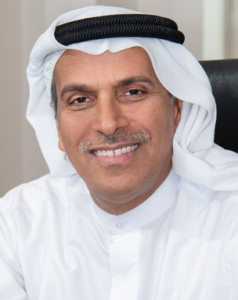Quick search
CTRL+K
Quick search
CTRL+K


Since 2010, the Global Law Experts annual awards have been celebrating excellence, innovation and performance across the legal communities from around the world.
posted 2 years ago
The United Arab Emirates (UAE) federal government adopts a progressive approach towards governance and implementation of laws. It recognizes best practices in international laws and adapts them to suit local needs as these are important for growth of the economy to bring it in line with the global trade regimes. Resultantly, over the years, the UAE has evolved into a very vibrant economy which tends to attract investments from all over the World. Accordingly, it has strengthened several local laws to provide better legal framework and infrastructure for safeguarding and protecting such investments in trade and commerce.
Statutory protection
Federal Decree-Law (36) of 2021, which specifically governs the trademarks regime in UAE, is a step in this direction. It abrogates the earlier Federal Decree-Law (37) of 1992. Article (2) of the new Decree, which is stated below, defines trademark/s and provides, inter alia, for registration and protection of some of the non-traditional marks which include “sound” mark/s.
“A Trademark is everything that takes a distinctive shape of names, words, signatures, letters, Symbols, numbers, addresses, seals, Drawings, Pictures, Engravings, packaging, graphic elements, forms, colour or colours or a combination thereof, a sign or a group of signs, including three-dimensional marks, Hologram Marks, or any other mark used or intended to be used to distinguish the goods or services of a facility from the goods or services of other facilities, or to indicate the performance of a service, or to conduct monitoring or examination of goods or services. A distinctive sound or smell may be considered as a Trademark”.
As the definition of the “trademark” under the UAE law suggests, any sound which, over a period of continuous use, becomes distinctive of its source or origins may qualify as being a trademark. In other words, if a sound can be related with any company’s product or service then it is capable of being registrable in the same manner as the traditional marks i.e., words, logos, brand names, signs, symbols etc., though the degree of distinctiveness required for registration of such marks would be high.
Requisitions
There are certain requisitions which need to be complied with for seeking registration of such sound marks in UAE.
Internationally well recognized sound marks
There are several sound marks which are well recognized internationally for their distinctive sound and the visual representation associated with them. Their trademark/s applications have been accorded statutory protection in different jurisdictions. Given below are few examples of such sound marks having a trademark significance and thus these do identify their source or origins:
1. Incidentally, the first registration for a sound mark was issued in the United States of America in the year 1947. It was accorded to the National Broadcasting Company (NBC) for the musical notes G, E, C which played on chimes for radio broadcast services. Thereafter, in the year 1971, NBC obtained registration for the popular “3 chime like notes” for broadcasting services.
2. Zippo Manufacturing Company, a well-established and known manufacturer of cigarette lighters, proved before the USPTO, with the help of evidence of its extensive usage, sales revenue of lighters sold and advertisements, that the sound produced by its lighters at the time of igniting a fire had acquired distinctiveness and is associated with its products and business.
3. The other good example of a sound mark is the Intel Corporation’s “Intel Inside” musical note. This mark was initially registered in United States of America, Australia, Canada etc., with the evidence of having acquired distinctiveness by virtue of its use in respective market/s. The sound mark consists of a 5 notes audio sequence – D Flat, D, Flat, G Flat, D Flat and A Flat and is also graphically represented along with its electronic recordings.
4. Nokia mobile phones did capture substantial share of the global market in mobile phones in the 90s and early 2000s. The Nokia mobile phones ring tone consisted of a unique sound or musical note. It became distinctive enough to be recognizable amongst mobile users as originating from Nokia mobile phones. While granting registration to the said ring tone, US Court observed that “A sound mark depends upon aural perception of the listener which may be as fleeting as the sound itself unless, of course, the sound is so inherently different or distinctive that it attaches to the subliminal mind of the listener to be awakened when heard and to be associated with the source or event with which it is struck. If the sound can be associated with the source of a product or service, it can serve as a trademark.”
5. “McDonald’s I’m lovin’ it” jingle has been used by ‘McDonald’s’ for a very long time. It primarily conveys how enjoyable and happy one feels while having food at McDonald’s restaurant/s considering not only the high quality of food being served while maintaining high hygiene standards, but overall experience of having it.
6. Animal sound/s has also been accorded protection provided these become distinctive enough to warrant registration under trademarks laws. Metro Goldwyn Mayer – MGM Lion Roar is one such example. As the trademark suggests, this mark comprises a distinctive roar of a lion along with its unique video representation. It has become the mainstay for several Hollywood films produced under the MGM banner. The said sound mark was accorded statutory protection in United States of America under number 1395550 dated June 3,1986 covering:
Class 9 – motion picture films and pre-recorded video tapes.
Class 41 – entertainment services namely production and distribution of motion pictures and providing films and tape entertainment for viewing through the media of television, cinema and other media.
Conclusion
In today’s day and age of computerization and digitization, associated sound/s become instantly recognizable because of its usage over a period of time and thus can be connected with its source or origins. Accordingly, the UAE federal government has taken a step in the right direction and aptly came up with the amended version of the earlier law specifically incorporating “sounds” within the definition of “trademarks” thus widening its scope and application. Hence, sound mark/s, which form an important branch of trademarks, can now be granted statutory protection under the UAE law subject to fulfilling of certain requisitions as stated above. There have been several instances of such sound marks which have been granted registration in different jurisdictions, internationally. Considering the aforesaid, any distinct or different sound has the potential to become distinctive enough to warrant registration and protection under Trademarks law.
If you have any questions about this or any other query related to Trademarks Law, please get in touch with the author Rajiv Suri directly on [email protected]
Rajiv Suri is a senior associate in the intellectual property and corporate and commercial team at Alsuwaidi & Company. Rajiv advises clients on strategies involving a wide range of intellectual property matters and has been involved in managing corporate portfolios across various industries.
Author


There are no results matching your search.
Resetposted 23 hours ago
posted 23 hours ago
posted 23 hours ago
posted 23 hours ago
posted 23 hours ago
posted 2 days ago
posted 2 days ago
posted 3 days ago
posted 3 days ago
posted 3 days ago
There are no results matching your search.
ResetFind the right Legal Expert for your business
Sign up for the latest legal briefings and news within Global Law Experts’ community, as well as a whole host of features, editorial and conference updates direct to your email inbox.
Naturally you can unsubscribe at any time.
Global Law Experts is dedicated to providing exceptional legal services to clients around the world. With a vast network of highly skilled and experienced lawyers, we are committed to delivering innovative and tailored solutions to meet the diverse needs of our clients in various jurisdictions.